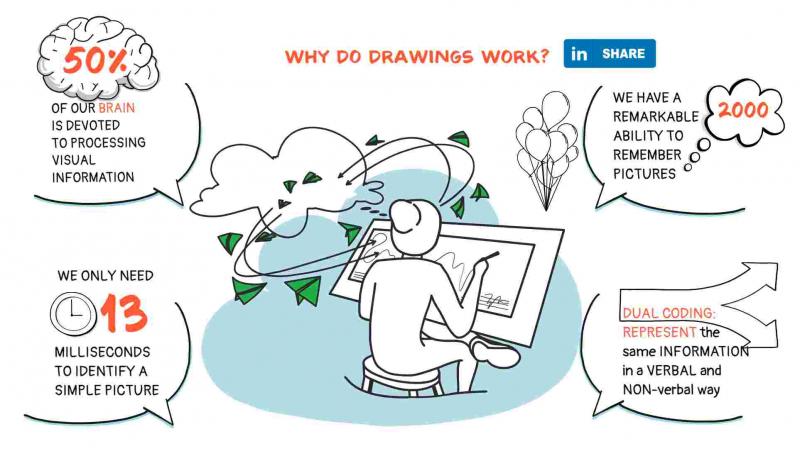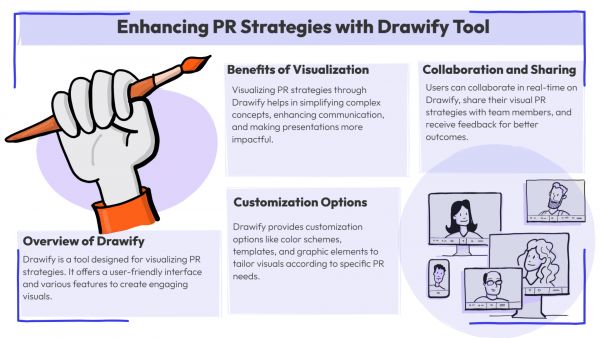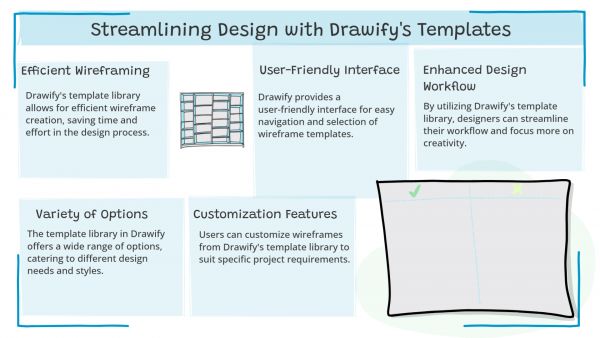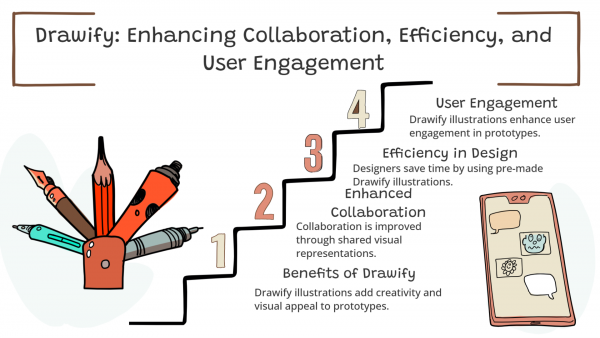Whether you've got stories to tell or art to create, there's a place for you here.

UX Designers
Creating Intuitive Icons and Symbols Without Drawing Skills
-
ARAnshu Raj- Founder & CEO, Drawify
-
Sep 23, 2025 5 min read
In today's fast-paced digital world, visual communication is far more important than ever. Icons and symbols are indispensable for enhancing clarity, user engagement, and design appeal in various contexts, including websites, mobile apps, presentations, infographics, and marketing materials. However, not every individual has the time or expertise to become a talented illustrator. The good news is that you don't need advanced drawing skills to create user-friendly, professional-looking icons and symbols.
Modern tools, templates, and design strategies empower non-designers to create visually appealing designs that communicate effectively. This article explores how to make intuitive icons and symbols with no drawing abilities, the tools available, design best practices, and SEO-friendly techniques to ensure your graphics strengthen your online presence.

Why Icons and Symbols Are Important in Design:
Before we go into the "how", let's talk about the "why". Icons and symbols are more than just decorative elements; they have a practical role in design:
- Improve the User Experience (UX): Icons lead users through interfaces, making navigation faster and easier.
- Universal Communication: Symbols transcend language barriers, helping global audiences to rapidly understand communications.
- Visual Hierarchy: Icons break up text-heavy information and highlight key actions or ideas.
- Brand Consistency: Using unique symbols can help to build brand identity and recognition.
- SEO Value: Optimised icons (with alt text and metadata) contribute to improved website accessibility and exposure.
Simply defined, icons and symbols are valuable tools for storytelling, navigation, and branding, making them important in digital communication.
The Challenge: Creating Icons Without Drawing:
Historically, developing unique icons involved sketching, vector illustration skills, and knowledge of software such as Adobe Illustrator. However, for marketers, entrepreneurs, educators, and product managers without these talents, the barrier might be impossible to overcome.
Common Challenges Include:
- Not knowing how to draw well-defined shapes.
- Having difficulty with proportion and alignment.
- Making consistent-style icons is difficult.
- There is not enough time to master professional design tools.
The solution is to use pre-built assets, icon libraries, AI tools, and drag-and-drop design platforms that make icon production simple—even for beginners.
Step-by-Step Guide to Creating Icons Without Drawing:
Here's a beneficial approach for designing icons and symbols without drawing skills:
1. Define the purpose of the icon:
Ask yourself:
- What message should this icon convey?
- Is it for navigation (home, search, or settings)?
- Is it for branding (logos and social media graphics)?
- Is it for information design (infographics and charts)?
Clarity of purpose ensures that your icons do not become generic; instead, they fit with their function and user context.
2. Use Icon Libraries and Marketplaces:
There are thousands of ready-to-use icons accessible on the internet, covering almost every theme imaginable. Some useful resources include:
- Drawify: Drawify allows you to drag and drop customised illustrations and icons.
- Font Awesome: A complete library popular in web design.
- Noun Project: The Noun Project features millions of icons created by global contributors.
- Flaticon: Flaticon offers a mix of free and premium icon sets.
- Material Icons by Google: Material Icons from Google are simple, uniform icons for digital products.
To keep your style consistent, just use one icon pack or library.
3. Make Use of Online Icon Creators:
If you want something more unique but don't want to sketch, icon maker tools are your greatest friend!
- Canva: Provides thousands of pre-made icons that you may combine, resize, and change the colour of.
- Drawify: Drawify lets you drag and drop customised icons and illustrations.
- Figma Plugins (e.g., Iconify, Feather Icons): You can integrate scalable icons directly into your design projects with the help of Figma plugins (like Iconify and Feather Icons).
- Visme: Visme is ideal for infographic icons and presentations.
- Looka: Looka is an AI-powered application that lets users create logos and icons without the need for design expertise.
These tools provide customisation features like colour, stroke thickness, and size tweaks, while still enabling drag-and-drop simplicity.
4. Customise with Shapes and Symbols:
Icons can be created without sketching by utilising simple geometric shapes such as triangles, lines, rectangles, and circles. This is quite simple with tools like Drawify, Figma, Canva, Google Slides, and PowerPoint.
For instance:
- A magnifying glass (search icon) = circle + line.
- A house (home icon) = triangle + square.
- A play button = a triangle inside a circle.
This method works great if you need minimalist, flat icons.
5. Make Use of AI-Powered Resources:
AI has further simplified the process of creating icons:
- Icons8 Lunacy: AI-generated icons with standardised styles are available from Icons8 Lunacy.
- MidJourney / DALL·E: It can produce unique symbols in response to commands.
- Designify: Designify is an AI tool that automatically generates brand elements.
- Drawify: It is a platform for ready-to-use diagrams in order to express your thoughts and emotions in an effective manner.
With AI, you can specify your desired outcome (for example, "a minimalist blue shopping cart icon"), and the program will produce several versions right away.
6. Keep Your Design Consistent:
It's important to be consistent, even if you're not drawing. It is essential that these elements remain constant throughout your icon set:
- Stroke Weight: The thickness of each line should be the same.
- Colour Scheme: Adhere to a basic monochromatic scheme or brand colours.
- Corner Radius: It's important to maintain consistency between rounded and sharp corners.
- Style: 3D, skeuomorphic, flat, or outline; don't mix styles at random.
Users are more likely to recognise and trust your pictures when they are consistent.
7. Use the Correct Formats for Exporting:
Icons need to be lightweight and scalable. They can be exported to:
- SVG (Scalable Vector Graphics): Best for websites and apps, infinitely scalable.
- PNG: For transparent backgrounds, presentations, or social media.
- ICO: For website favicons.
To make changes later, always save a master vector file.
Top Techniques for Developing Perceptive Icons:
The efficacy of your icons is dependent on design principles, even when using tools. Make use of these recommended practices:
1. Keep Things Easy:
Icons ought to be easily identifiable. Steer clear of extraneous details that overcrowd the design.
2. Employ Metaphors that are Universal:
Remain with well-known symbols:
- Envelope = Email
- Magnifying Glass = Search
- Gear = Settings
This ensures that users understand the meaning easily.
3. Verify Clarity:
Present your symbols to other people. Simplify even more if people have trouble understanding.
4. Give Accessibility First Priority:
Include alt text for screen readers and ensure that icons have adequate contrast. This enhances SEO and usability.
5. Consider Scalability in Design:
Both the 16px (favicon) and 256px (app icons) versions of your icons should look good. Be aware that details that are too complicated tend to disappear at small sizes.
Real-World Use Cases of No-Draw Icon Creation:
1. Startups:
In order to create branding materials without hiring designers, entrepreneurs might utilise icon creators.
2. Educators:
Teachers can improve communication by including icons in e-learning modules, infographics, and presentations.
3. Marketers:
Icons make social media posts stand out, and conversions are increased on landing sites with clear symbols.
4. App Developers:
Libraries such as Material Icons can be used for app prototypes by non-designers, saving money and time.
5. Corporate Teams:
Dashboards, reports, and internal training materials can be created by staff members and improved with basic iconography.
SEO Benefits of Icons and Symbols:
Using icons properly can help with search engine optimisation in addition to enhanced design:
- Alt Text Optimisation: Always provide descriptive alt text (for example, "shopping cart icon" rather than "icon.png") as part of alt text optimisation.
- Page Speed: Core Web Vitals are improved with lightweight SVG icons, which load more quickly.
- Increased Engagement: By keeping consumers interested, visuals reduce bounce rates.
- Accessible Design: Websites with appropriate ARIA labels and icon descriptions are preferred by Google.
- Image Search Visibility: Google Image Search may display optimised icons, increasing traffic.
The Future of Drawing-Free Icon Creation:
Future developments include voice-command design tools, brand-aligned auto-generated images, and AI-driven customisation. In a short time, you may just specify what you need—for example, "a neon-style food delivery icon for a Gen Z audience"—and AI can provide a set that matches your branding right away.
Because design has become more accessible, anyone, regardless of ability, will be able to produce polished icons that improve their digital communication.
It is now easier than ever to create clear icons and symbols without having any sketching skills. With the use of AI-powered tools, drag-and-drop design platforms, and pre-made libraries, you can create images that improve user experience, reinforce branding, and effectively communicate without the need for a notebook.
The secret is to prioritise accessibility, consistency, and clarity to make sure your icons fulfil their stated purpose and connect with your target audience. Learning to create icons without painting can help you save time, cut expenses, and enhance your online presence as a product manager, marketer, instructor, or company founder.
At the end, it should be kept in mind that design is more about communicating ideas clearly than it is about drawing well. You can produce polished, SEO-friendly icons that enhance your work with the correct resources and techniques.
- Events
- Workshops
- Visual Storytelling
- How to video
- Communities
- Sketchnoting
- Templates
- UX Designers
- Agile Professionals
- Product Managers
- Freelance Graphic Designers
- Creative Tech Enthusiasts
- Online Course Creators
- Social Media Content Creator
- Creative Agency Owners
- Marketing Professionals
- EdTech Professionals
- Scrum Masters
Come, Be Part of Something Special
-
Got ideas that need visual superpowers?
Jump in and start creating presentations and communications that people actually remember.
Sign In -
Are you an artist ready to grow?
Join our Drawifier family and focus on what you love most - creating art that matters.
Become a Drawifier
Get visualisation tips every week
Subscribe to the Drawify Newsletter, and feed your creativity with visualisation tips and techniques, as well as the latest Drawify workshops, news and resources.




